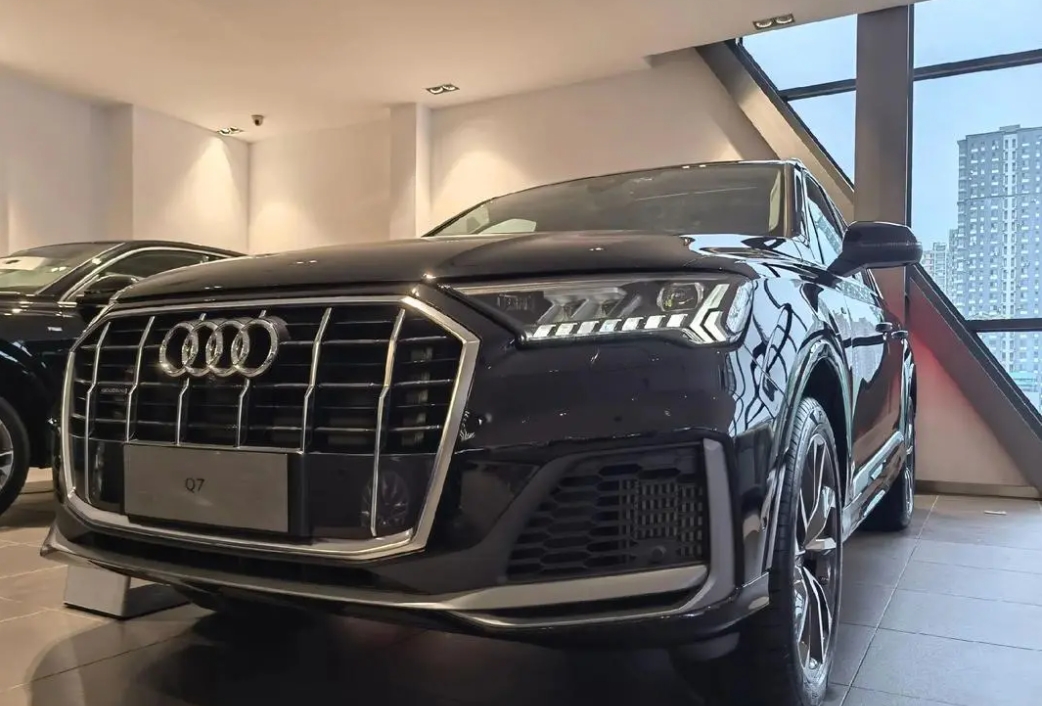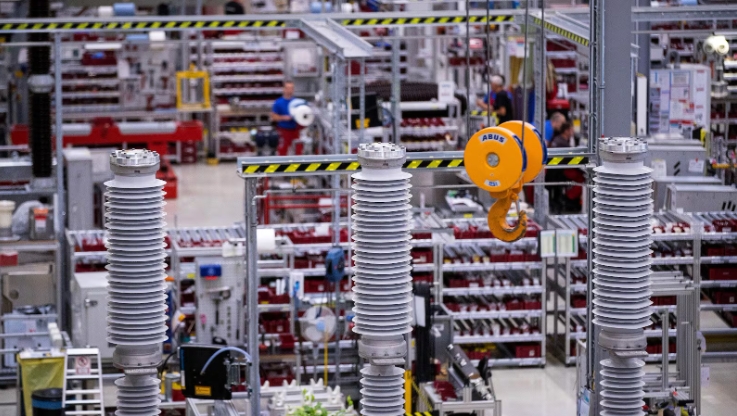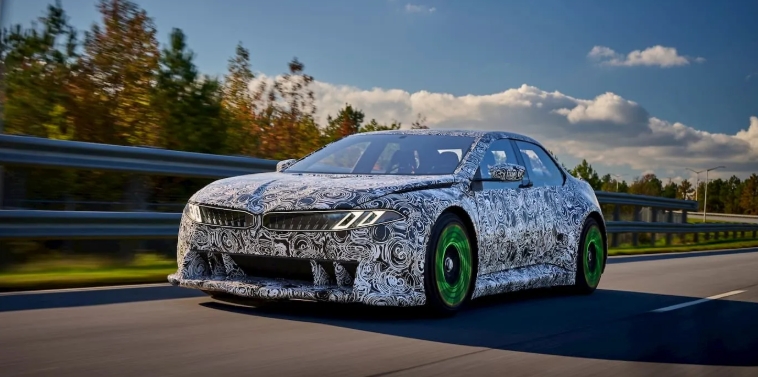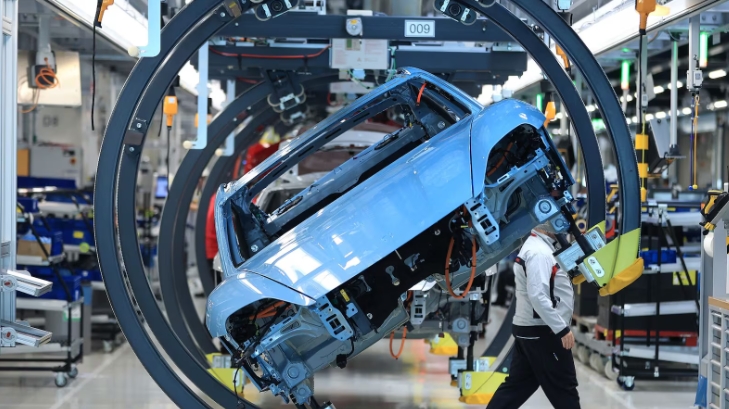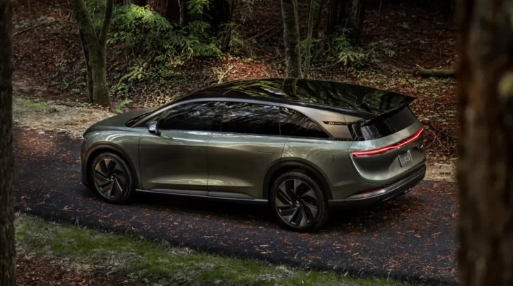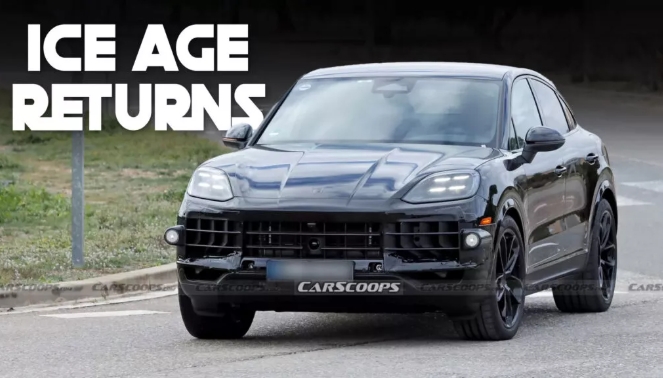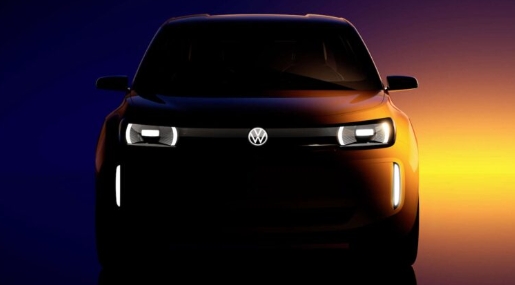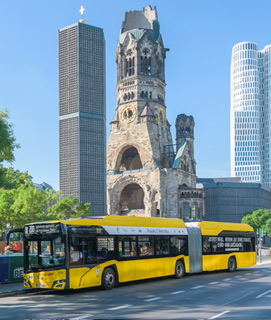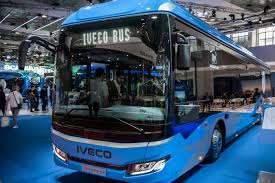Prices start at €85,500 euros (Q7 55 TFSI e) and €92,900 (Q8 55 TFSI e).
Larger battery, more power, longer range. At the heart of both plug-in hybrids is a three-liter six-cylinder Otto engine with 250 kW (340 PS) of output, a compact electric motor (PSM) with a maximum output of 130 kW and 460 nm of torque, and a new, more powerful, liquid-cooled lithium battery located under the floor of the trunk.
The battery's energy is concentrated in 17 cells with 70 Ah each, called “stacks”. Six stacks form one unit, which are connected in series. This compact design inside the battery housing eliminates the need for an additional module housing, resulting in higher power density. The design achieves a maximum capacity of 25.9 kWh (gross; 22 kWh net) at 370 volts.
The increased capacity results in an all-electric range of up to 90 kilometers in urban areas under the WLTP EAER City standard: this is equivalent to a combined electric range of up to 85 km under the WLTP EAER standard.
The maximum system output of both models with the 55 TFSI e quattro starts at 290 kW (394 PS) and a maximum system torque of 600 N·m (fuel consumption for the Q7 (weighted, combined): 1.4–1.2 l/100 km; power consumption (weighted, combined): 29.1–27.8 kWh/100 km; CO2 emissions (weighted, combined): 33–28 g/km; CO2 class (weighted, combined): B; fuel consumption on discharged battery (combined): 10.5–9.8 l/100 km; CO2 class on discharged battery: G; fuel consumption for the Q8 (weighted, combined): 1.6–1.2 l/100 km; power consumption (weighted, combined): 30.4–27.7 kWh/100 km; CO2 emissions (weighted, combined): 37–27 g/km; CO2 class (weighted, combined): B; fuel consumption on discharged battery (combined): 10.9–8.9 l/100 km; CO2 class on discharged battery: G) thanks to the electric motor's modified design.
With both engines working in tandem, the electrified Q7 and Q8 accelerate to 100 km/h in 5.7 seconds. Higher in the range is the 60 TFSI e quattro, which also benefits from a newly designed electric motor with up to 360 kW (490 PS) of system output and up to 700 N·m of torque (fuel consumption for the Q7 (weighted, combined): 1.4–1.3 l/100 km; power consumption (weighted, combined): 29.1–28 kWh/100 km; CO2 emissions (weighted, combined): 33–29 g/km; CO2 class (weighted, combined): B; fuel consumption on discharged battery (combined): 10.5–10 l/100 km; CO2 class on discharged battery: G; fuel consumption for the Q8 (weighted combined): 1.6–1.2 l/100 km; power consumption (weighted, combined): 30.2–27.9 kWh/100 km; CO2 emissions (weighted, combined): 36–28 g/km; CO2 class (weighted, combined): B; fuel consumption on discharged battery (combined): 10.9–9.9 l/100 km; CO2 class on discharged battery: G).
In this configuration, the Q7 and the Q8 go from 0 to 100 km/h in 5.0 seconds. All variants have an electronically limited top speed of 240 km/h, with an all-electric top speed of 135 km/h. The battery charges up to 7.4 kW and reaches 100 percent in approximately three hours and 45 minutes when charged at top power.
Customers who book the Audi charging service have access to approximately 630,000 charging points in 29 European countries, including the Audi charging hubs in Nuremberg, Zurich, Berlin, Salzburg, Munich, and Frankfurt (additional sites will follow). Customers can conveniently charge with Audi and many other providers with a single card.
With the product upgrade, customers can start their partially electric Q7 or Q8 in fully electric EV mode or hybrid mode. Once selected via the MMI, the desired mode remains active until manually changed. The fully electric EV mode has been fine-tuned so that only battery-powered propulsion is used even when the accelerator pedal is fully depressed.
Hybrid mode uses two operating modes: auto and hold. In auto mode, the predictive operating strategy automatically activates when navigation is started in the standard MMI navigation plus. Acceleration is primarily provided by the TFSI engine, supported as required by the electric motor. At low engine speeds, the electric drive now bridges the fraction of a second that the turbocharger needs to build up the pressure even more powerfully, thanks to the increased torque from the product upgrade so that the drive system responds spontaneously. Put simply, the predictive operating strategy works by driving as far as possible on electric power and using up the existing battery charge by the time the driver reaches the destination.
In hold mode, the existing battery charge is kept at its current level with only minimum fluctuations. This is achieved by recovering braking energy through a process known as recuperation and by shifting the load point through targeted interventions in the 3.0 TFSI management system. As a result, after a conventionally driven long-haul route, customers can now drive to their urban destination on all-electric power, with zero emissions and virtually no noise.
As a new feature included with the product upgrade for the Q7 TFSI e and Q8 TFSI e, the battery recharges intelligently and only above speeds of approximately 65 km/h when in charge mode. This maximizes efficiency and ensures high levels of electric driving in the city and in stop-and-go traffic. What’s more, in charge mode, the 3.0 TFSI is no longer constantly used to charge the battery; instead, recuperation alone is used. Charge mode ends when the battery has recharged to its maximum capacity at 75% to conserve the battery and increase efficiency.
The moments when the driver takes their foot off the accelerator pedal are crucial for the efficiency of the plug-in hybrid Q7 and Q8. The operating strategy switches to predictive efficiency assist (PEA) in these situations. In addition to navigation data, this driver assistance system uses the distance to the vehicle in front to decide between coasting with the TFSI switched off and recuperation, i.e., recovering kinetic energy and converting it into electrical energy. In thrust phases, the Q7 and Q8 TFSI e can recover up to 25 kW of power and feed it back into the lithium-ion battery.
Operating as a generator, the electric motor performs all light to moderate braking up to 0.3 g, corresponding to more than 90% of all deceleration events in everyday driving. The hydraulic wheel brakes only need to be used for heavy braking. The hybrid SUVs achieve up to 80 kW of recuperation power during braking.
When the optional adaptive cruise assist with radar cruise control is active, the PEA helps with deceleration and fuel-saving acceleration. If turned off, the Audi virtual cockpit or optional head-up display indicates to the driver when they should take their foot off the right pedal. Detail icons such as intersections, city signs, or vehicles ahead illustrate the reason for the reduction in speed.
